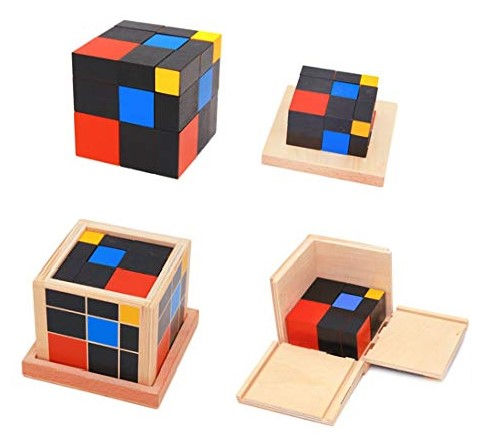top of page
SAFETY FIRST We're taking extra measures to ensure your children are safe in our school.
.jpg)
Sensorial
Sensorial learning is a teaching approach that stimulates the child’s five senses; taste, touch, smell, sight, and hearing. This allows children to use their senses to explore and understand the world around them. It includes activities that help them study objects, colors, textures, tastes, numbers, and situations.










Sensorial comes from the words sense or senses. As there are no new experiences for the child to take from the Sensorial work, the child is able to sharpen senses and enable deeper understanding of sensations, concentrate on the refinement of all his senses, from visual to stereognostic. They help children become aware of details through, first, strongly contrasted sensations (red vs. blue), and then, through variously graded sensations (various shades of blue). Materials isolate a single quality: color, weight, shape, texture, size, sound, smell, etc., for children to train their focus.
The purpose and aim of Sensorial work is for the child to acquire clear, conscious, information and to be able to then make classifications in his environment. Dr. Maria Montessori believed that sensorial experiences begin at birth. Through his senses, the child studies his environment. Through this study, the child then begins to understand his environment. The child, to Montessori, is a “sensorial explorer”.
Montessori sensorial materials are carefully designed. Whether purchased or handmade, they follow basic Montessori Principles.
-
They isolate the quality (for example, the geometric shapes introduced are the same color and only vary in shape). This allows the child to focus on that one quality.
-
They have a control of error (for example, the child will not be able to fit all the cylinders properly into a cylinder block if one is out of place). So the child is able to make the correction himself.
-
They prepare the child indirectly for future learning (for example, many of the sensorial activities come with ten pieces as an indirect preparation for the decimal system).
-
All of the material must be complete. This allows the child who is working with the material to finish through the entire piece of work without having to stop and find a missing piece.
-
All of the material is limited. The first use of the term limited refers to the fact that there is only one of each material in the environment. This calls for other students to build on their patience. The second use of the word limited is in reference to the idea that not all of one quality or piece of information is given to the child. This child is not given every color in the world, but only a select few. This gives the child the keys to the information so it peaks his curiosity and leads him to learn more out of his own interest.
-
Most importantly, all of the material could be called “materialized abstractions”. This means that though Montessori’s Sensorial materials, abstract concepts are made into concrete materials.
Through the work of sensorial materials, the child is given the knowledge not through word of mouth, but through his own experiences.
bottom of page